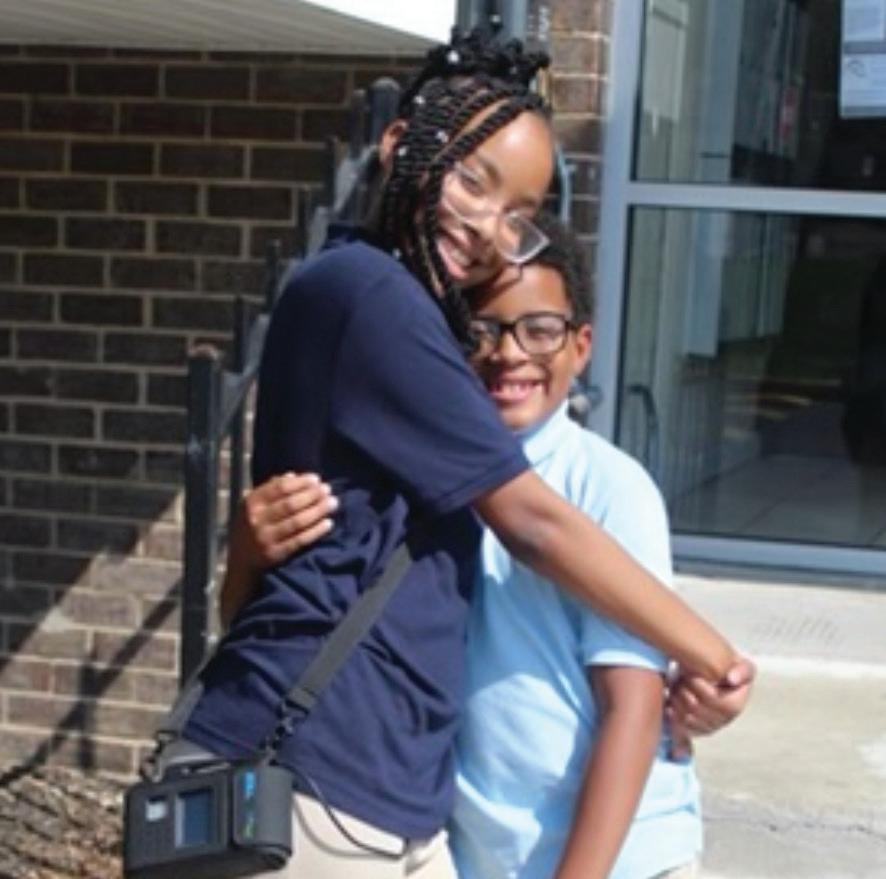




WINTER 2025

SKYBEAR DELIVERS WHEN EVERY MINUTE MATTERS
How Our Transport Medicine Team Saves Lives
The Clark Foundation Builds Healthier Futures Recognizing Extraordinary Leaders
The transport team saved my baby’s life. I will never forget their professionalism and precise teamwork.”
―
Darrell, Destyni’s Dad
Destyni, 14, was too weak to move. “My body hurt,” she says. “I didn’t move much for two days. My dad was worried.” Destyni’s dad, Darrell, took her to a local hospital emergency department.
What began as a blur of pain and exhaustion for Destyni was about to become a fight for her heart ― and her life.
“The people there tried to examine me, but didn’t have the right machine,” she recalls. “I didn’t know what was going on. There was no thinking. I was on the stretcher. I just closed my eyes and blacked out.”
The hospital called the Children’s National hotline on that late summer night in 2024. SkyBear, our rapid helicopter transport service, soon would be on its way to care for Destyni and deliver her to our Cardiac Intensive Care Unit (ICU).
“Our Transport Medicine teams bring a passion for taking care of patients and families on their most terrifying days, when a child’s health is at risk,” says Monnie Smith, a flight paramedic with more than 20 years of experience as a critical care provider. “Our job is to provide top-notch care, keep them
safe, get them where they need to go and provide a little comfort along the way.” Smith was one of the paramedics on Destyni’s SkyBear flight. It was a critical part of the care that would save her life.
Destyni, now 15, is well. She gets good grades and is focused on college and her future. She dreams of becoming a fashion stylist, interior designer or professional volleyball player.
“What happened to Destyni is the worst thing that has ever happened to our family,” says Darrell. “Even talking about it is hard.”


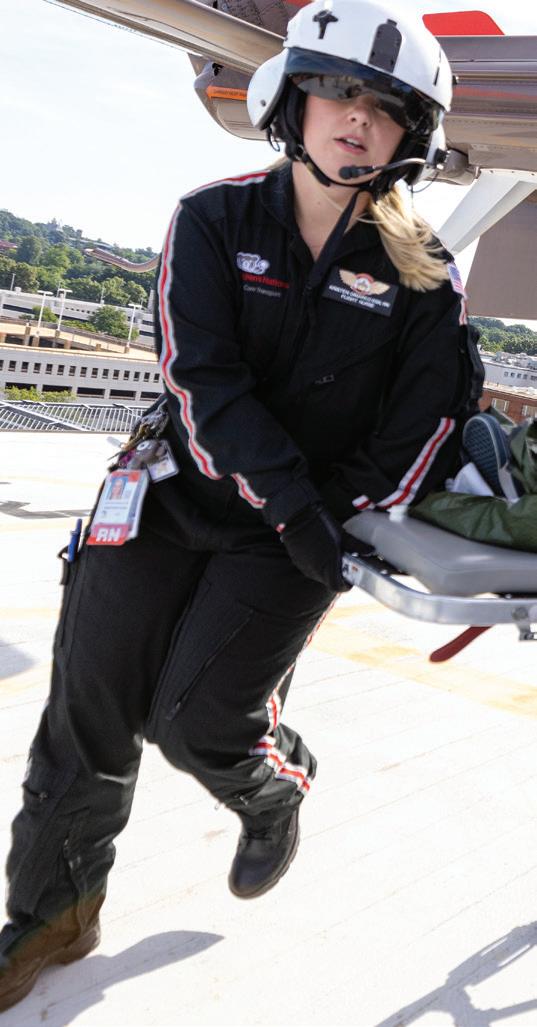

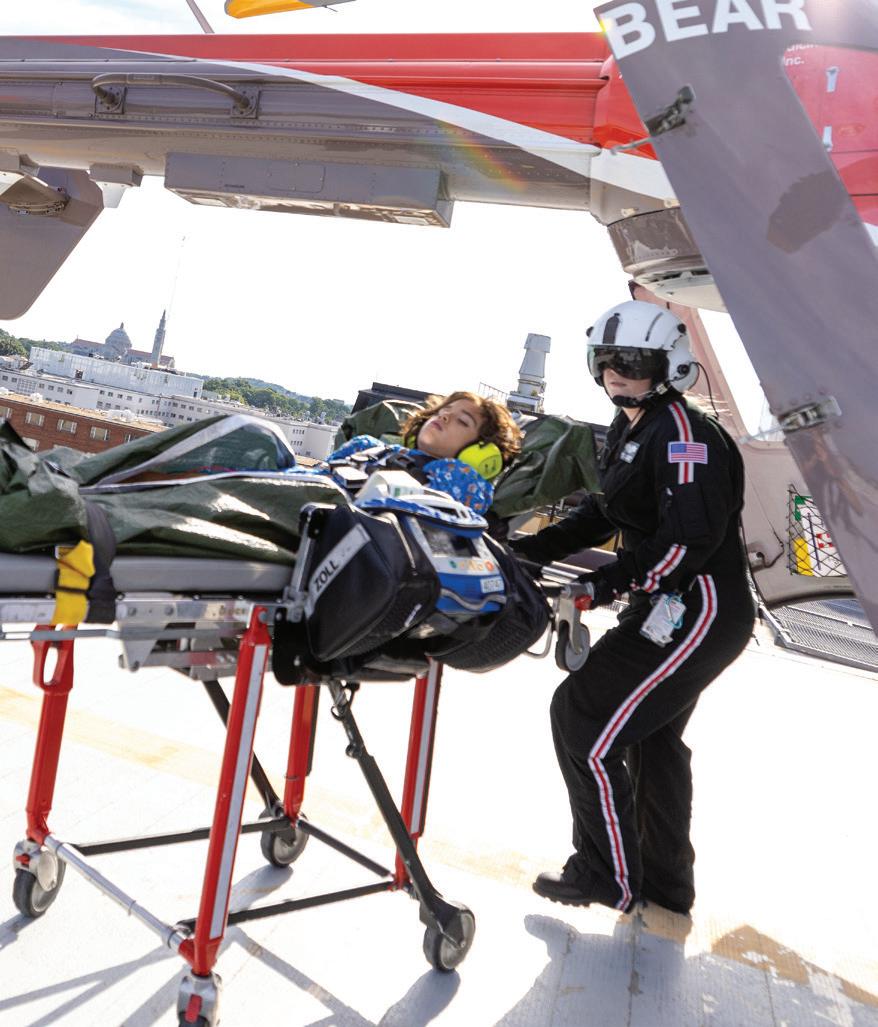


Children’s National is the only hospital in the Washington, D.C., metropolitan area with pediatric-only trained flight teams. Our Department of Transport Medicine extends the hospital’s reach by bringing critical care providers to the patient’s bedside at other hospitals, via ambulance or helicopter, to deliver highly specialized medical treatment.
Transport Medicine providers care for kids from moments after birth until their early 20s. Cases include stabilization and transport of critically ill premature babies and children with traumatic injuries, from broken bones and burns to severe injuries from major traumatic events. The team regularly encounters patients with difficulty breathing, heart failure and many other critical medical issues.
On a typical day, a flight nurse, flight paramedic and pilot staff a SkyBear transport case. When the patient needs additional support, a respiratory therapist or a pediatric intensive care physician may join.
Our Transport Medicine team has a single objective: to provide the safest, highest-quality stabilization and transport of patients to and from Children’s National. It serves all of Maryland, the District of Columbia and Northern Virginia, with frequent missions to West Virginia, North Carolina, Pennsylvania and beyond.
Multiple teams work in staggered shifts around the clock, ensuring that both ambulance and SkyBear transport are ready at a moment’s notice. Each member of the department’s leadership staff is a registered nurse or certified paramedic, so that even during the busiest times, the hospital always can put together a team.
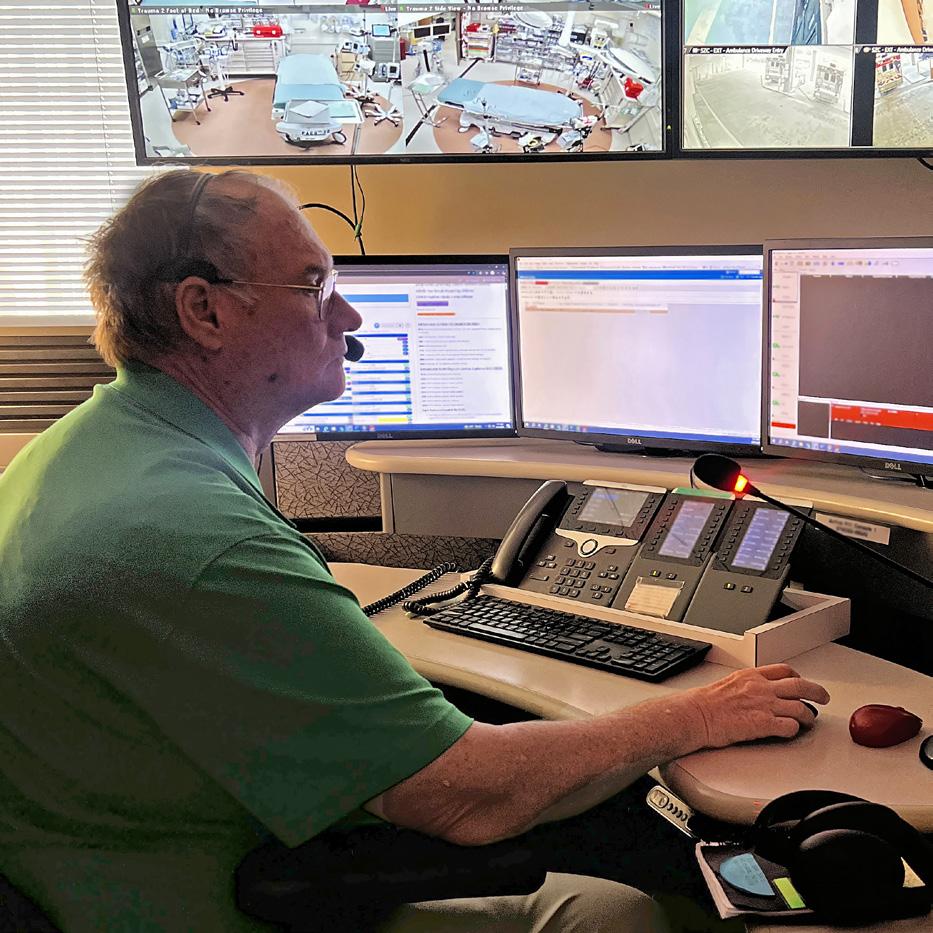
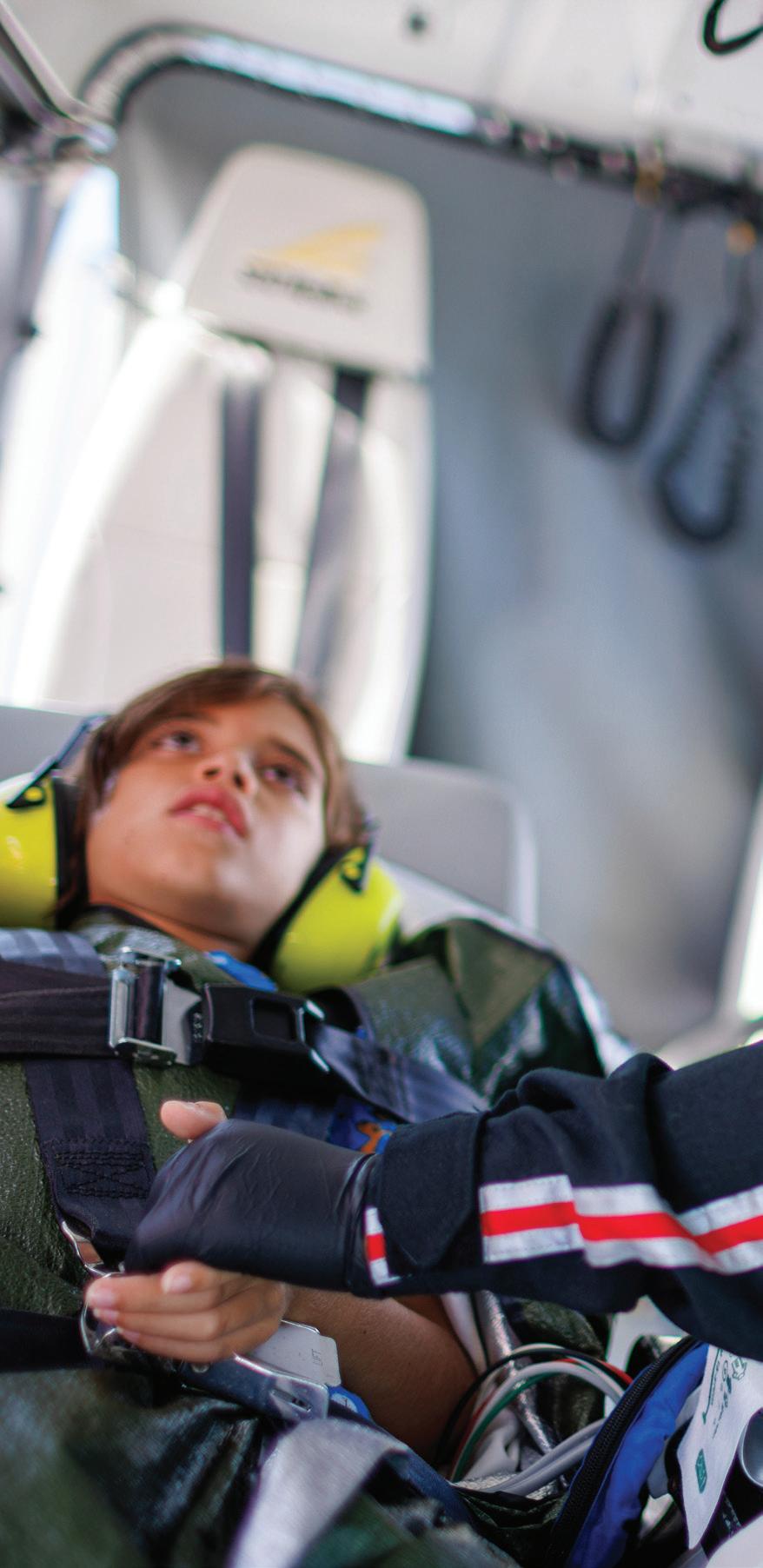
14, 2024
Howard answered the 1 a.m. call to our 24/7 telephone hotline.
Destyni was at a local hospital with abdominal pain. Care providers reported that she was stable, but out of concern that something serious may be occurring, they requested immediate transfer to Children’s National. At a call center on our hospital’s 6th floor, Howard worked with Erin Dillon, RN, the shift intake nurse, to gather clinical information and assess the situation. Dillon has been a transport nurse at Children’s National for nearly 20 years. With all available information in hand, Howard dispatched an ambulance for Destyni. Paramedic Josh Milburn and Katelynn Highsmith, RN, were on their way.
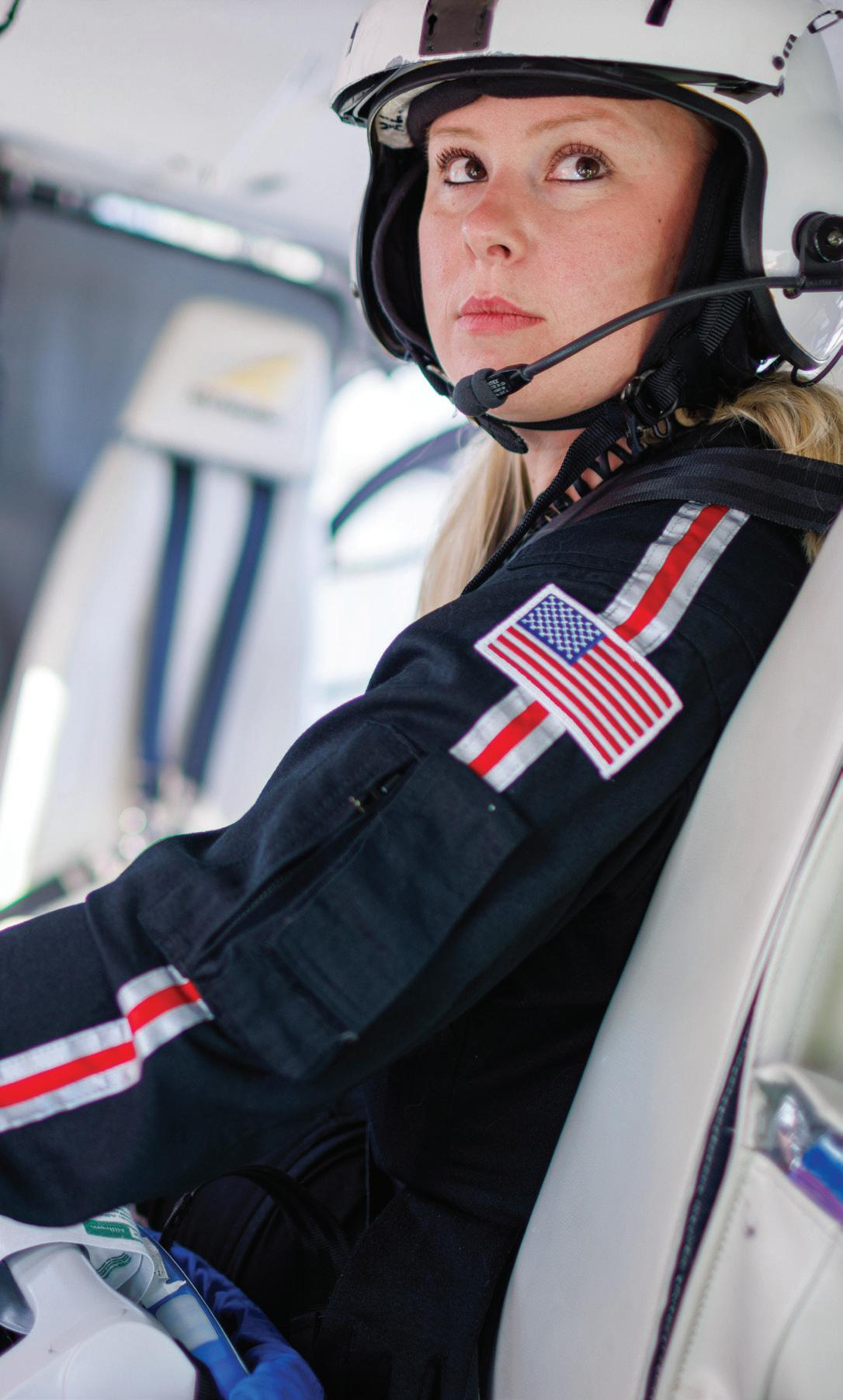

KEVIN HOWARD Transfer Coordination Specialist
Howard has worked in our Emergency Communication and Information Center for 37 years. He answers calls for help and coordinates transportation and care for babies and children to and from Children’s National. He collects and disseminates vital medical information and strategically communicates to save lives.
His superpowers? People skills, masterful multitasking abilities and a reputation for calm in situations that are almost always stressful. Once, during a snowstorm, Howard successfully convinced the Maryland Department of Transportation to provide a snowplow escort. It cleared the way so that our ground transport team could get a child with a ruptured appendix two hours away in St. Mary’s County and bring them to Children’s National.
Howard also coordinates delicate ground and air transport of donated organs for the hospital’s transplant teams. “Every minute we’re dealing with children’s lives and outside professionals looking for help to treat the children in front of them. We operate like a family. There’s no team I’d rather be a part of,” he says.
When the Children’s National ground crew got to the local hospital and assessed Destyni’s condition, they found it to be more severe than expected.
“The tone got much more serious,” says Darrell. “One of the ambulance crew said, ‘No, this isn’t right.’”
Destyni was lethargic and pale. Back at Children’s National, Howard stayed in touch with the ambulance crew and initially reached out to the oncall doctor in our Pediatric Intensive Care Unit (PICU). The estimate for the ambulance to deliver Destyni to our main hospital campus was 25 minutes.
She appeared to have a heart block, a serious cardiac condition in which electrical signals in the upper and lower chambers are unable to
synchronize with each other. The attending physician at Children’s National agreed that Destyni’s condition was critical and transport to our Cardiac ICU was urgent.
The risk of a delay was too great. While our ambulance crew worked at the local hospital to improve Destyni’s slowing heart rate and low blood pressure, Howard dispatched SkyBear to bring her to our Cardiac ICU as soon as possible. The helicopter would take only three to five minutes of travel each way, dramatically reducing the risk for Destyni.
“They explained that Destyni’s heart was barely beating and that the helicopter had to come. The rest was a blur,” Darrell recalls.
Smith and flight nurse Megan Boutin, RN, had just returned to Children’s National from an earlier SkyBear flight. Howard alerted them that they would need to do a quick turnaround for another emergency.
They were still in their black and red flight suits. They restocked their flight bags with the emergency medicines and supplies they might need. Transport Medicine teams carry specialized pediatric equipment, such as child-sized blood pressure cuffs, IV catheters and protective face masks so that they are ready to care for everyone, whether the patient is a 2-pound baby, teenager or young adult. Smith and Boutin huddled for a briefing about Destyni’s situation, got back in the helicopter and buckled their helmets and seatbelts.

It’s a high-stress job. Focusing on our safety protocols every time we lift and land ensures that we’re prepared for whatever we’re heading into, to make sure we keep our patients and ourselves safe.”
― Megan Boutin, RN

Gabrielle Baylon, MD, was the PICU fellow on call that evening. She was busy mentoring first-year fellows when she heard from Howard about Destyni, under care with an ambulance crew. Dr. Baylon consulted with the attending physician in our Cardiac ICU. “They were equally concerned about the risk of the patient going into cardiac arrest and felt I should go with the helicopter team,” she says.
Dr. Baylon immediately called our communications center and asked them to hold the helicopter. She headed to the staff elevator. She donned a flight suit and found a helmet that fit. As the sliding doors parted, she stepped onto the rooftop helipad, where the bright red helicopter waited against the night skyline of the nation’s capital.

As soon as team members secured themselves in the helicopter, air traffic control cleared SkyBear for takeoff from Children’s National. The thump-thump of the rotor blades filled the air. They lifted off into the dark, banking south. Michigan Avenue receded into a thin ribbon of headlights hundreds of feet below.
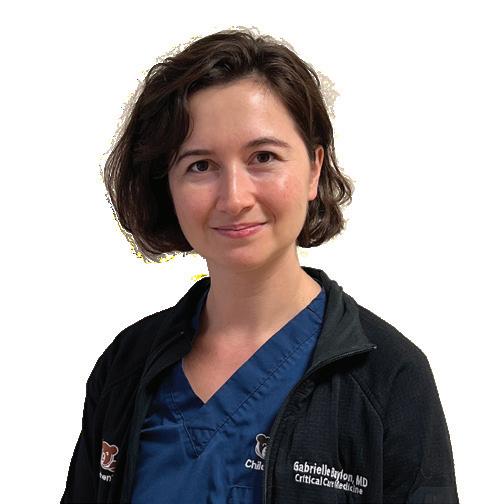
As a child, Dr. Baylon loved puzzles, knitting and sewing. She made a regular practice of taking her bicycle apart and putting it back together to understand how it worked. In high school, she discovered biology. “My childhood instilled in me the predecessors of critical care,” she says. These include the ability to persevere to finish a difficult task, find calm amid a complicated procedure, work with her hands, ponder different angles of a problem, pay attention to details and find solutions.
“There’s an intense camaraderie among our critical care teams the fellows, residents, nurses and attending doctors and the Transport Medicine teams that I have never felt anywhere else,” Dr. Baylon says. “Those incredible bonds and the respect and teamwork that save lives are what keep me coming back to work every day.”
About three minutes later, SkyBear landed, and Dr. Baylon, along with flight crew Smith and Boutin, joined the ambulance crew at Destyni’s bedside. They introduced themselves to her family and hospital staff, amid a din of beeping machines. Destyni was restless. Her heart rate was alarmingly low, and she needed to get to the Cardiac ICU right away.
The team checked her vital signs and set up a mobile defibrillator to monitor her heart during the short return flight. Dr. Baylon explained to Destyni’s father the urgent situation and immediate care plan for her. Highsmith, the nurse from the ambulance crew, joined the flight team to ensure continuity of care.
I’m deeply proud of our transport team. We have the resources we need in place ― including our command center, dispatch team, intake nurse and, in this case, the cardiologist ― to take the best possible care of the patient. That’s an awesome feeling.”
― Josh Milburn



After a concise conversation and quick collaboration, the SkyBear team was ready to bring Destyni to Children’s National. Our Cardiac ICU staff, in constant contact, was ready to receive her. “When we were sure Destyni was stable, we wrapped her up, strapped her in and flew back as fast as we could,” says Dr. Baylon.
“The transport team saved my baby’s life,” says Darrell. “I will never forget their professionalism and precise teamwork. Even when I thought I might be in the way, trying to hold her hand or talk to her, they worked adeptly around me, getting her ready to fly.”
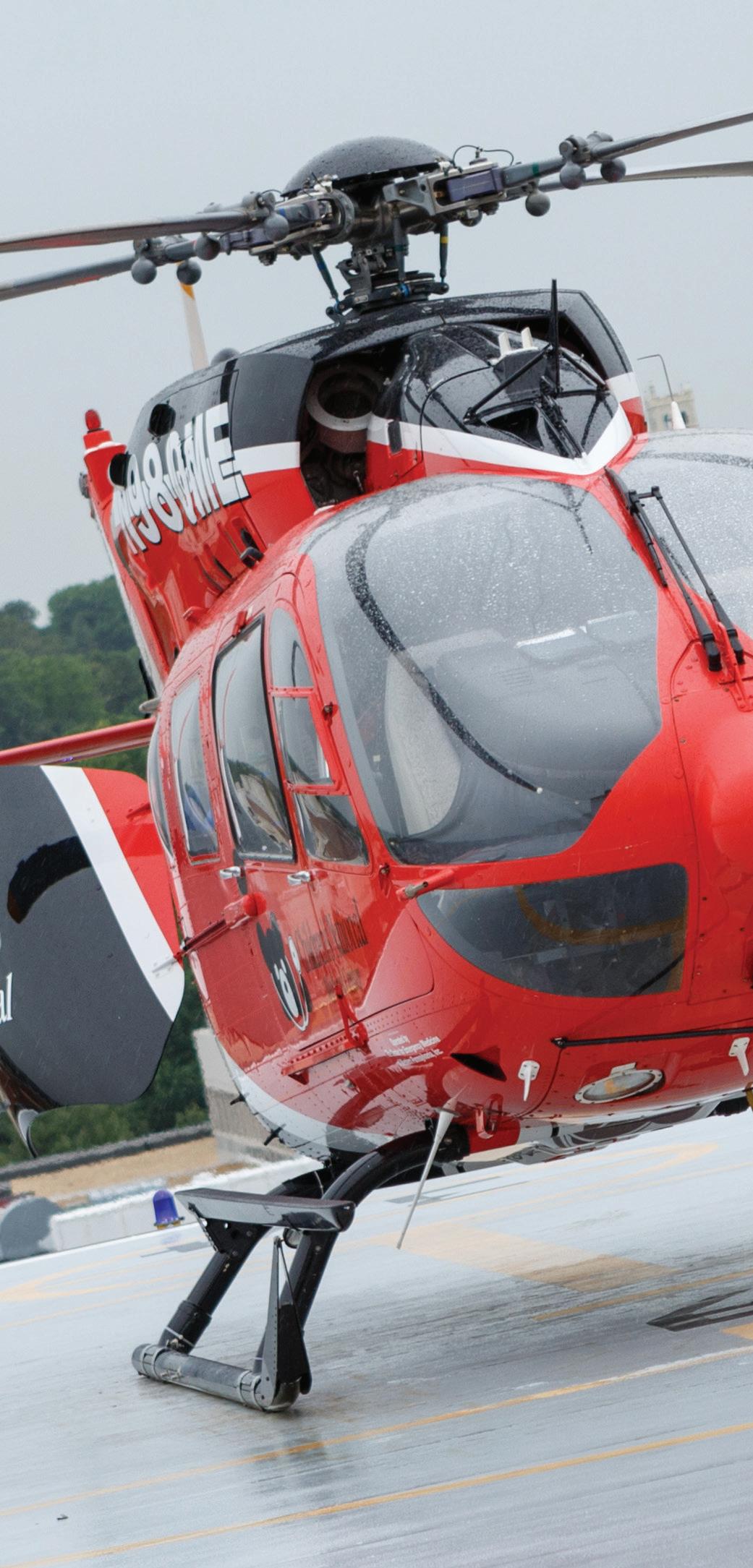
Out of the helicopter, the team rolled fast, delivering Destyni from the landing pad through the vestibule and down the elevator to the hospital’s 3rd floor, monitoring her all the way.
Destyni’s Cardiac ICU team, including fellow Brittany Badesch, MD, had the room set up with the medications and equipment she would need, including the extracorporeal membrane oxygenation (ECMO) machine, which would provide life support. That team took over Destyni’s care within 10 minutes after touchdown. “They settled her into an ICU bed and intubated her in short order,” Dr. Baylon says.
Cardiac ICU physicians diagnosed Destyni with myocarditis, or heart inflammation, caused by a virus. Her care team placed her in an induced coma that would last for two weeks to let her heart rest while they treated her.
“The hospital team explained everything to help me understand,” Darrell recalls. “I was terrified, and they took care of me too. Whatever I needed, someone was there with a glass of water, a blanket or an answer to a question. Most important, they truly took care of Destyni.”
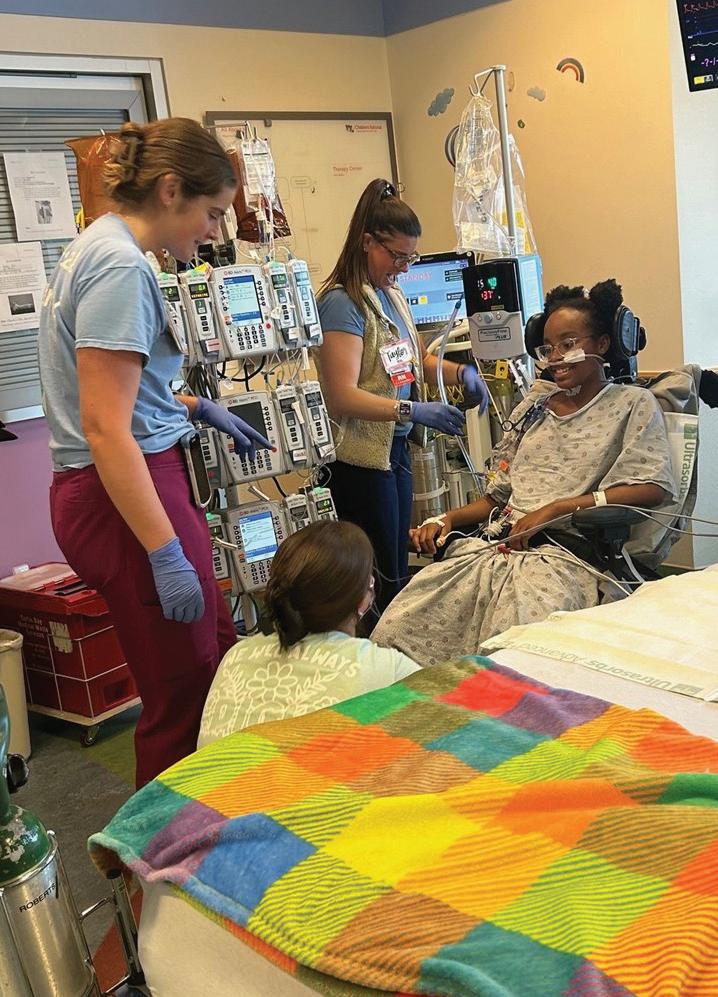
Nurses on our Transport Medicine team rotate in three different roles for intake, flight and ground transport. A team of neonatal nurses joins when newborns need critical care.
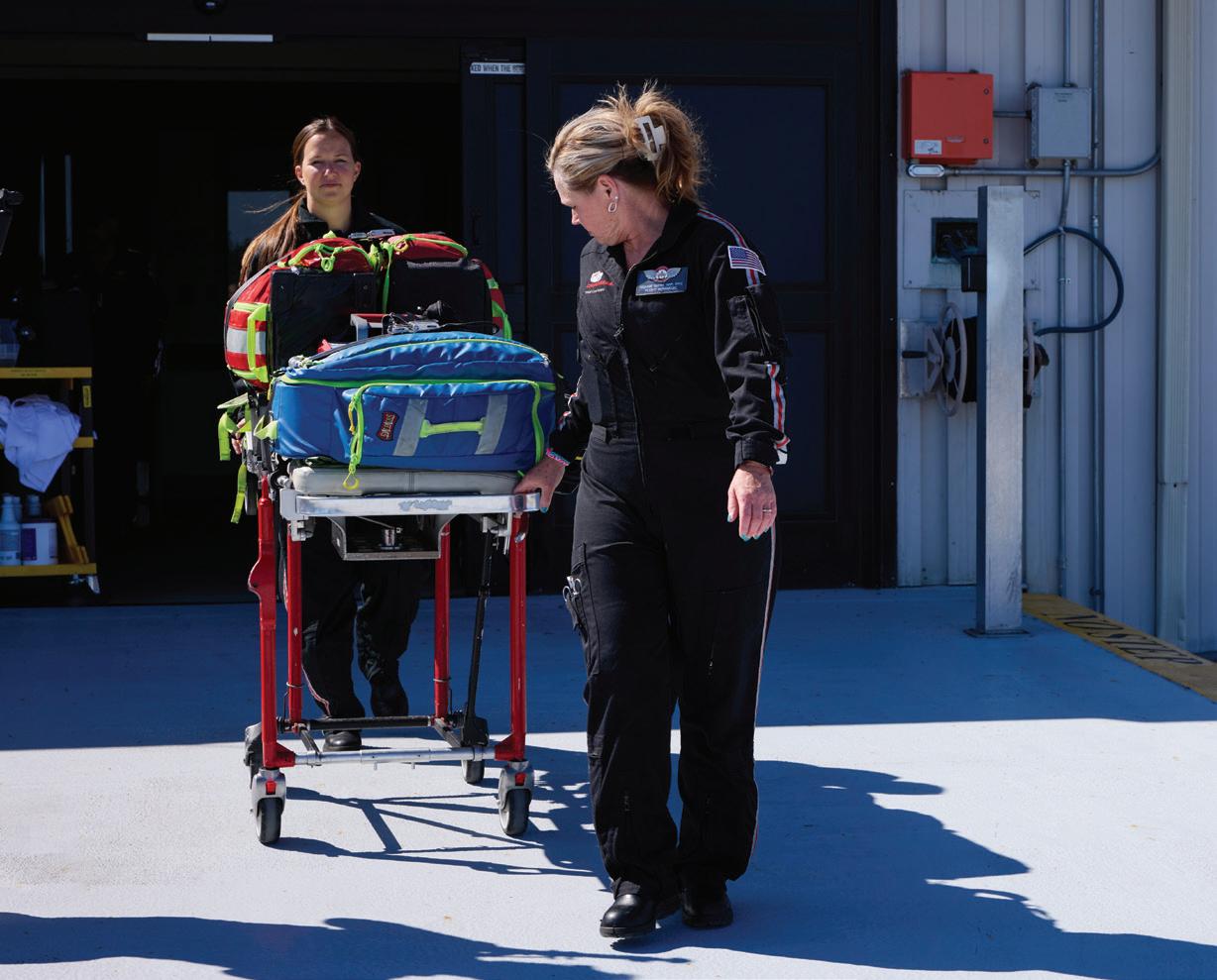
22
23
6,000
The team transports about about half are critical care patients and about
12
10 communication specialists paramedics newborns and children every year arrive via SkyBear nurses administrative and education staff
900
Destyni woke up surrounded by plush stuffed animals and a soft blanket that nurses had arranged on her bed. “That made me feel safe and warm,” she says. “When I awoke, I still felt tired but better. The nurses and even my physical therapists kept me laughing as I recovered. My dad was very appreciative and emotional about it.”
She finally left the hospital after nearly a month. At home, she wore a defibrillator vest that monitored her heart and sent hourly reports to her hospital care team for the months that followed.
“The staff at Children’s National, including the transport team, made it possible for me to go home with a healthy daughter,” says Darrell. “I never imagined something like this would happen. When it did, it felt like it would never end.”
Darrell says now he and Destyni are happy to return to the hospital for check-ups: “They shine love on her when she walks back in as her regular self ― full of light. This is amazing to me and the best feeling ever.”

